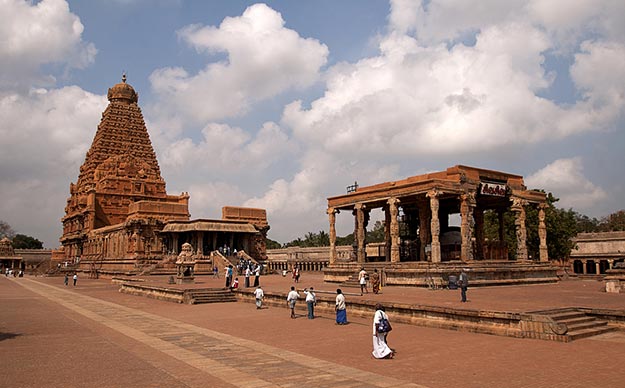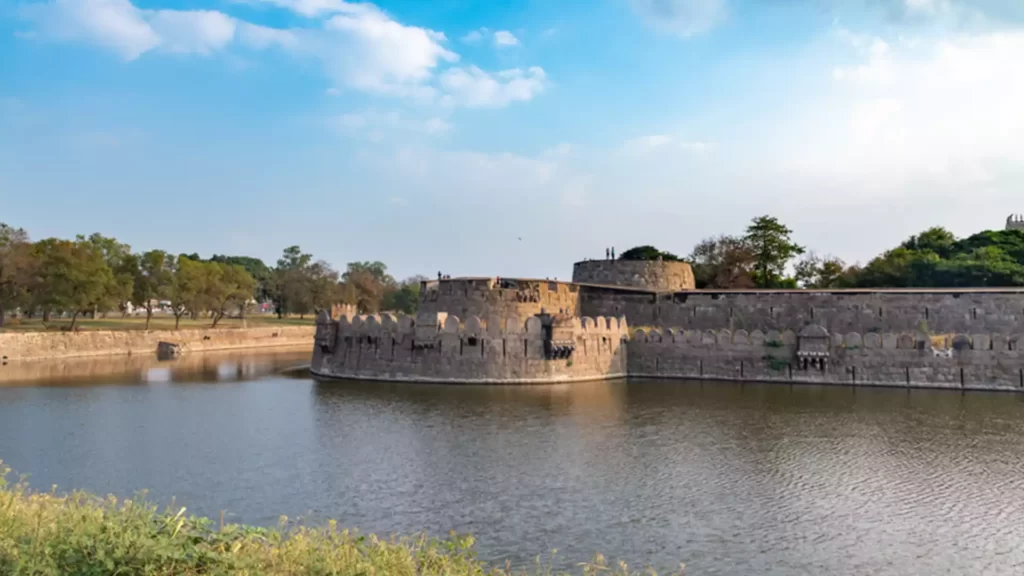Introduction
Historical Places of Tamil Nadu
Historical Places of Tamil Nadu, located in the southern region of India Tamil Nadu is a place that is rich in history and heritage. From its ancient beginnings to stunning temples, forts and palaces, the region is a fascinating historical legacy that continues to draw tourists. In this article, we’ll explore the Historical Places of Tamil Nadu, history to Tamil Nadu, its ancient beginnings, legendary temples, impressive palaces and forts, stunning cities and vibrant rich cultural heritage natural beauty spots, UNESCO World Heritage Sites as well as some unique historical treasures that contribute to the appeal of Tamil Nadu.

Historical Significance of Tamil Nadu

when we are discussing Historical Significance of Tamil Nadu, a state nestled in the southern part of India that holds a remarkable historical significance spanning thousands of years. Since the beginning of humanity through the decline and the rise of powerful dynasties throughout the zone, this region has experienced an abundance of economic, political, and cultural development.
1.Ancient Civilizations and Sangam Literature: Tamil Nadu’s history reaches back to ancient times, with archaeological evidence suggesting human settlements during the Indus Valley Civilization. This early civilization laid the foundation for the state’s cultural diversity. The Sangam period, roughly between 300 BCE and 300 CE, produced a wealth of literary works that provide insights into the social, economic, and political life of the time. The Sangam literature not only depicts the lifestyle of the people but also establishes the state’s prominence in trade and culture.
2. Maritime Trade and Cultural Exchange: Tamil Nadu’s strategic location along the Bay of Bengal made it a hub for maritime trade. The ancient port city of Poompuhar was a bustling center of commerce, connecting the region to distant lands like the Roman Empire and Southeast Asia. The exchange of goods and ideas enhanced cultural diversity and helped in the creation of Tamil Nadu’s distinct identity
3. The Mighty Cholas: The Chola Dynasty, one of the longest-lasting and powerful dynasties of Tamil Nadu’s past, left a lasting impression on the area. From the 9th through the 13th century The Cholas built an empire maritime that stretched over South Asia and Southeast Asia. Their administrative acumen, architectural prowess, and patronage of the arts turned Tamil Nadu into a cultural powerhouse. The Brihadeeswarar Temple in Thanjavur stands as a magnificent testament to Chola architecture and engineering.
4. Temple Architecture and Spiritual Legacy: Tamil Nadu is renowned for its magnificent temples that showcase not only architectural brilliance but also the spiritual ethos of the land. The temples served as not just places of worship, but also centers of education, art, and governance. The Meenakshi Amman Temple in Madurai, with its intricate carvings and towering gopurams, reflects the elaborate Dravidian architecture that flourished during different dynastic periods.
5. Vijayanagara and Nayak Dynasties: The Vijayanagara and Nayak dynasties continued the legacy of architectural excellence and cultural patronage. The Madurai Nayak rulers, for instance, enriched the state’s cultural heritage through their support of music, dance, and literature. The iconic Madurai Meenakshi Temple underwent significant expansions under their rule, contributing to its present-day grandeur.
6. British Colonial Rule and Struggle for Independence: Tamil Nadu’s history also intersects with the colonial period when the British East India Company established its dominion. The state was witness to various socio-political movements and played a pivotal role in the Indian independence struggle. Leaders like C. Rajagopalachari and Subramania Bharati emerged from Tamil Nadu, contributing to the nationwide movement for freedom.
7. Modern Cultural Renaissance: Post-independence, Tamil Nadu continued to flourish culturally. The state saw a resurgence in Tamil literature, cinema, and theater. Renowned figures like K. Kamaraj, M.S. Subbulakshmi, and M. Karunanidhi left an indelible mark on both state and national politics.
Conclusion: A Legacy Preserved and Celebrated historical significance of Tamil Nadu is a treasure trove of human achievement, creativity, and resilience. Its cultural and architectural heritage stands as a testament to the prowess of various dynasties and civilizations that have graced its land. From the Sangam literature to the towering temples and colonial struggle, Tamil Nadu’s history is a chronicle of its people’s enduring spirit and their commitment to preserving their unique identity amidst the currents of time.
Cultural Heritage of Tamil Nadu: Unveiling a Tapestry of Tradition and Expression

Cultural Heritage of Tamil Nadu is a rich mosaic woven from centuries of traditions, art forms, and practices. From classical arts to vibrant festivals, this state stands as a vibrant testament to the creative spirit and deep-rooted values of its people. Join us as we journey through the diverse Cultural Heritage of Tamil Nadu, we will be discovering the enchanting stories and artistic wonders that define this land.
1. Bharatanatyam: The Dance of Grace: Bharatanatyam, one of India’s classical dance forms, finds its origins in Tamil Nadu. Known for its intricate footwork, expressive gestures, and elaborate costumes, this dance form is a visual representation of the state’s rich cultural heritage. Temples like Chidambaram and Meenakshi Amman in Madurai have been instrumental in nurturing and preserving this ancient dance tradition.
2. Carnatic Music: Soulful Melodies: Carnatic music, a genre known for its intricate melodies and emotional depth, has flourished in Tamil Nadu for centuries. Renowned composers like Thyagaraja, Muthuswami Dikshitar, and Shyama Shastri have left an indelible mark on this musical heritage. The Margazhi season, marked by a series of music and dance festivals, draws enthusiasts from around the world to revel in the soul-stirring tunes.
3. Tamil Literature: Epics and Poetic Treasures: Tamil Nadu boasts a literary legacy that dates back over two millennia. The Sangam literature, composed during the Sangam period, is a collection of poetic works that provide insights into the social and cultural milieu of ancient times. Epic poems like “Silappathikaram” and “Manimekalai” are cultural treasures that continue to be celebrated for their artistic brilliance and profound narratives.
4. Pongal: Harvest Festival and Cultural Celebration: Pongal, the harvest festival celebrated with fervor in Tamil Nadu, encapsulates the state’s agrarian roots and community spirit. This four-day festival includes rituals, feasting, and colorful rangoli designs that adorn homes. Pongal is a time when families come together to express gratitude for the harvest and invoke prosperity.
5. Temples: Architectural Marvels and Spiritual Centers: Tamil Nadu’s temples are not only places of worship but also architectural marvels that reflect the state’s cultural and spiritual ethos. The intricate carvings, towering gopurams, and vibrant sculptures in temples like Meenakshi Amman Temple in Madurai and Brihadeeswarar Temple in Thanjavur narrate stories of devotion and artistic prowess.
6. Festivals: A Kaleidoscope of Colors and Devotion: Tamil Nadu’s festivals are a dazzling spectacle of tradition, devotion, and community celebration. The grand chariot processions during the “Ther Thiruvizha” of Kapaleeshwarar Temple in Chennai and the exuberant “Jallikattu” event during Pongal are just a few examples of how festivals echo the state’s cultural vibrancy.
7. Traditional Arts and Crafts: Handcrafted Splendors: Tamil Nadu is home to a myriad of traditional arts and crafts that have been passed down through generations. Tanjore painting, Chettinadu crafts, and Kanchipuram silk weaving are expressions of the state’s artistic finesse and commitment to preserving heritage.
8. Tamil Cinema: A Cultural Phenomenon: Tamil Nadu’s cultural heritage extends to its vibrant film industry. Tamil cinema, often referred to as “Kollywood,” has produced iconic films and celebrated artists who have contributed significantly to Indian cinema. Superstars like Rajinikanth and Kamal Haasan are not just actors but cultural icons whose influence spans borders.
Conclusion: A Living Legacy of Creativity and Tradition cultural heritage of Tamil Nadu is an intricate tapestry woven with threads of dance, music, literature, festivals, and more. This vibrant Cultural Heritage of Tamil Nadu legacy is a reflection of the state’s enduring commitment to preserving its traditions while embracing modernity. As you explore Tamil Nadu, each step reveals a piece of this dynamic and evolving cultural mosaic that has enriched lives for generations and continues to do so in the present day.
Forts and Palaces of Tamil Nadu: Echoes of Regal Past and Architectural Grandeur

Forts and Places of Tamil Nadu, in this segment we will be discussing the Tamil Nadu’s historical legacy which is not limited to its temples; it also boasts a collection of forts and palaces that tell stories of power, valor, and artistic excellence. These structures stand as silent witnesses to the region’s dynamic history and the architectural brilliance that flourished within its boundaries. Join us as we unravel the tales woven into the forts and palaces of Tamil Nadu.
1. Gingee Fort: A Fortress of Endurance: Gingee Fort, often referred to as the “Troy of the East,” stands as a symbol of resistance against various dynasties. Its impressive complex includes three hill forts, granaries, temples, and barracks. The fusion of Dravidian, Islamic, and European architectural styles showcases the fort’s evolving history.
2. Vellore Fort: A Blend of Eras: The Vellore Fort is a remarkable blend of different architectural styles, reflecting the influence of the Nayak, Maratha, and British eras. The fort is known for its massive ramparts, moat, and the Jalakanteswara Temple within its premises.
3. Tanjore Palace: Royalty in Stone and Stucco: The Thanjavur Maratha Palace, also known as the Tanjore Palace, is a majestic structure that exemplifies Maratha architecture. The Durbar Hall and the Sarawathi Mahal Library within the palace complex are repositories of history and art, showcasing the royal opulence and cultural patronage of the Maratha rulers.
4. Padmanabhapuram Palace: A Wooden Marvel: Situated in Kanyakumari district, the Padmanabhapuram Palace is known for its intricate wooden architecture. It offers a glimpse into the opulent life of the Travancore rulers. The palace features the King’s Council Chamber, the King’s Bedroom, and the renowned “Mantrasala” with its exquisite craftsmanship.
5. Ramanathapuram Palace: A Testament to Elegance: The Ramanathapuram Palace, once the residence of the Sethupathi rulers, showcases a blend of architectural styles. With its ornate carvings, spacious courtyards, and the Thirumalai Nayak Mahal, the palace stands as a testament to the artistic and cultural legacy of the region.
6. Fort Dansborg, Tranquebar: A Colonial Jewel: Located in Tranquebar, Fort Dansborg is a Danish colonial fortress that offers a unique glimpse into Tamil Nadu’s colonial history. Its distinctive architecture, including the Governor’s Bungalow and the Masilamani Nathar Temple, reflects the mingling of European and local influences.
7. Thirumalai Nayak Mahal: A Regal Residence: The Thirumalai Nayak Mahal in Madurai is a grand palace that showcases Indo-Saracenic architecture. Built by King Thirumalai Nayak, the palace features an impressive courtyard, ornate arches, and an awe-inspiring dome.
8. Rajagopalaswamy Temple and Fort: Serene Oasis: The Rajagopalaswamy Temple and Fort complex in Mannargudi presents a unique amalgamation of religious and defensive structures. The fort’s bastions and walls encircle the temple, adding an aura of protection to the spiritual sanctum.
Conclusion: Guardians of History and Heritage are more than mere architectural marvels; they are living testimonials to the region’s vibrant history and cultural diversity. From the fortresses that withstood sieges to the palaces that witnessed royal grandeur, each structure has a story to tell, showcasing the valor, vision, and creative genius of the people who shaped Tamil Nadu’s past. As you step into these historical corridors, you embark on a journey through time, unraveling the layers of a regal and artistic tapestry that has shaped the state’s identity.
Conclusion
As we bring our expedition through the Historical Places of Tamil Nadu to a close, we find ourselves enriched by the stories and echoes of the past that have woven this state’s remarkable tapestry. From the stirring ancient origins that link us to millennia-old civilizations, to the grandeur of forts, palaces, and temples that stand as testaments to human ingenuity, our journey has been one of discovery and appreciation.

Each historical monument is a timeless masterpiece, echoing the whispers of the past and standing as a testament to human ingenuity and creativity. Thank you for sharing these captivating glimpses into our shared heritage.
Thanks for your comments
Thanks for your response
Pingback: Discover the 108 Divya Desam Unlock Spiritual Bliss: D